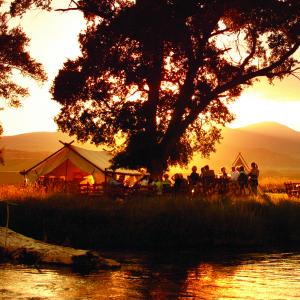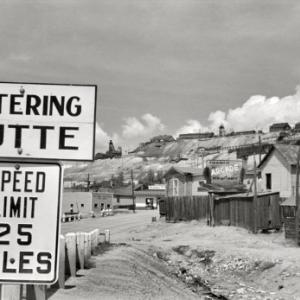 Bill Muhlenfeld is owner and publisher of Distinctly Montana magazine and other publications. He lives in Bozeman with his wife and co-owner, Anthea George, and always finds time to enjoy the great outdoors, when he is not writing about it....
Bill Muhlenfeld is owner and publisher of Distinctly Montana magazine and other publications. He lives in Bozeman with his wife and co-owner, Anthea George, and always finds time to enjoy the great outdoors, when he is not writing about it....
Last year Gallup did an extensive poll of all 50 states asking residents to rate their state on livability, and asking if their state was “the best or one of the best possible places to live.” Surprisingly (to some). Montana and Alaska tied for first place, with 77% of each state’s residents describing those states as “the best place to live.” What? Aren’t those states cold, wild, mountainous and quite low in population density? Exactly. Bozeman, where I live, has all those elements, and they are some of the commonalities among the best-rated states registered by Gallup in their summation of the poll results. Bozeman, for example, rests in the Gallatin Valley, which is the approximate size of Rhode Island. Population of the entire valley? About 75,000.
So, just why do we live here?
Well, for starters, Montana’s low population density brings with it all kinds of favorable outcomes, including no traffic (really, NONE), no lines for coffee or concerts, thousands of square miles of mountains, forests and wildness, all crisscrossed with trails, paths and roads, and open to boots, hooves, mountain bikes and snowshoes. Low density shows itself too in more subtle ways, with a natural friendliness and openness at every place and happenstance--from shops and restaurants, to casual encounters in our great outdoors. The wonderful response to inquiries from visitors? “You bet.” Montanans, in general, are a wonderfully positive and outgoing people.
And, okay, it is cold, but it’s a dry cold. Montana is quite similar to Arizona in both humidity and annual precipitation, which makes most of winter a joy to experience. Heck, I’m from Chicago originally. And though I am quite fond of the state where I spent the first fifty years of my life, winters there are wet, freezing and grey. Montana? Dry, cool-to-cold and sunny.
The list of positives seems endless. Glacier and Yellowstone parks, grizzly bears, fresh huckleberry jam, fly-fishing, rafting and canoeing, fests and festivals, breweries and bistros, campfires, cowboys, wildflowers, bison burgers, hot springs, elk and moose, skiing, sleigh-rides and dog-sledding….did I mention “no traffic?”
There is a bumper sticker making the rounds here. It reads:
Montana is Full
I Hear North Dakota is Nice
And that, perhaps, is both the crux and the dilemma of Montana’s enviable identity. Low population density, it appears, brings with it a strong complement of positive circumstances which contribute mightily to well-being. One million Montanan residents share that sense of well-being with our 13 million annual visitors, and we are happy, even enthusiastic about touting the virtues of our truly enviable state and lifestyle. But... as more and more people discover what we in Montana believe to be “the best place to live,” there is a commensurate and intrinsic fear of population growth. The fear is that it could all end badly. More people will mean more problems, and isn’t it so?
The Last Best Place? You bet.


 The calm evening sheen of McGregor Lake filled the backdrop as Mike Ferda climbed into a burly waterproof suit bristling with hoses and valves. Before strapping on a 30-pound oxygen tank and pulling on his mask, he spit in the lenses.
The calm evening sheen of McGregor Lake filled the backdrop as Mike Ferda climbed into a burly waterproof suit bristling with hoses and valves. Before strapping on a 30-pound oxygen tank and pulling on his mask, he spit in the lenses.
